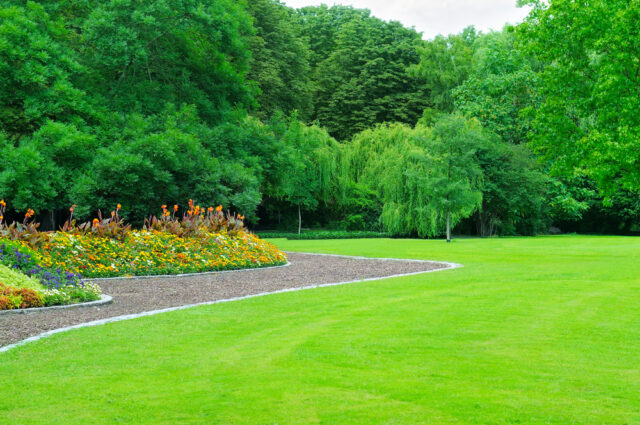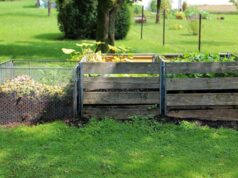There are two things that every homeowner wants – good neighbors and a lush healthy lawn. Good neighbors might be hard to come by, but you can have that perfect green lawn that you’ve always wanted. You’ll find many tutorials on how to keep your grass green. However, most of those tips don’t work. If you’re serious about keeping your garden green, follow this simple guide.
Plant native grass and check your soil pH
A Significant number of individuals choose fancy grasses to accentuate their garden. However, they hardly derive any benefit. Why? These grasses don’t grow and flourish due to undesirable climatic conditions. So, never choose fancy stuff for your garden. Instead, choose native grass that’s local and perfectly adaptable to your climate. Review your place minutely to find out the temperature, hours of sunshine, growing conditions as well as soil type to choose the right grass for your lawn. An ideal pH of the soil goes a long way in keeping the yard in a healthy condition. For lawns, the best pH level is 6 to 7.2. Test the soil and find its pH level. If it isn’t around the required level, you may want to change your soil type. Maintaining desirable soil pH can be a real chore and involves enough time. However, your efforts will let you enjoy lush, green grass.
Know when to water your grass
Morning hours are the best time to water grass. This allows the soil to efficiently absorb water (late watering will evaporate the water before it gets absorbed) and grass to photosynthesize. Since grass needs sunlight for photosynthesis, if you water it at night, the lawn cannot effectively use the water it receives. Also, watering at night creates a humid environment which allows grass diseases to flourish. Watering at midday means a significant amount of water will evaporate without getting absorbed by the grass. The air is generally cooler and the breeze is milder in the morning, giving the soil more chance to absorb water while keeping the lawn hydrated for the day.
Water the plants properly
Many people water their lawn too often at random but fail to get green grass. Such folks often wonder what went wrong and how to keep your grass green. Water the yard 5 to 6 inches deep and allow it to dry before another watering session. If you water the lawn before it dries, it can damage the plants. You need to be 100 percent sure that the soil is dry before watering again. So how do you check whether the plants are dry? Just poke a stick or rod in the soil to find out the level of water absorbed. Once you’re sure that the soil is dry, take another watering session.
Don’t use hot water
Not all, but some folks use warm water for their grass. However, hot water does more harm than good. The blades of grass get pinched and scorched. Also, hot water can burn the inner parts of grass. If this is the case, grass will wither out soon. The problem could get punctuated during the summer months. Also, don’t water too much. Excess water hinders growth. Additionally, excessive water seeps deep inside the soil and destroys it. As a thumb rule, use enough amount of water – neither too little nor too much. Also, use normal temperature water. In this way, you can bring grass to life meaning green and lush grass. It’s no secret and no rocket science – just simple tips to keep the grass green and healthy all the time. As a piece of additional advice, take before and after photos of the lawn to spot the difference.
Train the lawn and have a flexible watering regimen
To ensure a healthy lawn, don’t water it too often. It’s all about training the grass on developing a deep root system, so it can get through the hotter months without turning on sprinklers every day. In order for grass roots to find water in a deeper layer, soak them for long periods of time 2 to 3 times a week, instead of short daily soakings that might lead to a shallow root system. Do not water the garden when it rains. You may say that’s pretty obvious. But people commit a simple mistake by setting their automatic sprinkler system. If that’s your situation, turn off automatic water on rainy days. At the same time, be ready to water the grass again if the rain isn’t saturated enough.
Avoid creating run-off
If the water starts to puddle or run, it’s time to move the sprinkler to another location or turn it off. If it begins leaking before you could soak it, just turn the sprinkler off for 15-20 minutes. That should allow the water to seep in. Buy a reliable sprinkler such as an osculating model. The constant motion of an oscillating sprinkler gives the ground a brief pause to absorb the water before spraying more. Also, an oscillating sprinkler comes with a fully adjustable nozzle to reach the entire lawn or focus on a small space.
Water your lawn, not the path
Green is where the water should land, but you know that anyway, right! How often have you seen someone’s sprinkler busy watering everything, not the lawn? Your answer will be positive. Make sure you’re not one of these individuals. See to it that your sprinkler can adjust to fit your lawn’s size and shape. That will ensure you don’t waste water, time, or money on watering the path for no results.
Grass needs air for breathing
Lawns need water as well as oxygen. So, keeping your lawn aerated is imperative. Aeration includes perforation of the soil at regular intervals to reduce compaction and enable water, nutrients, and air to penetrate deep beneath the surface. The simplest and most affordable method would be to use a grade fork deep into the ground about 15cm above the lawn. For larger areas, it can be handy to rent a machine to do the more difficult job. You don’t have to rent such a device for a smaller lawn. Well-ventilated lawns will also absorb water easily.
Don’t forget to feed your lawn
Many individuals, who seek advice on how to keep your grass green, fail on feeding. All plants get nutrients from the soil. However, nutrients deplete with time. You need to add nutrients in the right quantity to ensure green grass. Some folks add too much nutrient and expect the grass to be healthy. However, that’s not correct. The more you add water and nitrogen-rich fertilizer, the more your lawn will overgrow. To avoid this issue, make a balanced feeding to the soil. Moderate feeding will pave the path for a lush lawn. An easy way to feed your grass is to use a spray fertilizer formula. Such an option streamlines your feeding task. Also, it ensures you provide nutrients in the right quantity. Above all, your feeding tenure gets effortless.
Keep the grass of the right height and remove weds
Increase the mowing height of your lawnmower during the summer to keep your lawn looking its best. The grass will not dry out as quickly. Also, the roots will be protected in a much better manner. Mow your lawn once in two to three weeks. That should keep the grass clean and healthy, although needs can change if there’s a lot of rain. These pesky items prevent growth by blocking nutrients and air from getting to the roots of the plants. If not attended, they can hamper the overall growth of your lawn. So make sure you get rid of moss, weeds, and thatch with the use of the right tool. “Early and often” weed control is better than spraying herbicide all over the lawn. You can do it by pulling them out manually. Alternatively, you may use a garden weed killer, fork, or hand weed killer. If there are too many weeds, try a weed-killer on the problem area. You can do a part of the lawn per day before it gets weed-free.
Use edgings and mow your lawn regularly
Most of the guides on how to keep your grass green don’t include edgings. However, Edgings are essential and prevent grasses from out bounding your lawn. Also, they keep the grass in the best condition for better growth and health. Even better, edgings present a sheer look to the outdoor space. Depending on your choice, you could use plastic, timber, or brick edging. Many people let the grass grow high. However, if the grass reaches high, maintenance of the yard becomes difficult. Also, mowing tall grasses could shock their roots, thus impacting their health. They might turn pale or wither out even by mild winds. So, mow the yard before the grass gets high. Have a dedicated mowing schedule and stick to it.
Final words
Creating a lawn isn’t a problem, but keeping it lush green can be a challenge. A ton of points need consideration to ensure a healthy-looking yard. A single mistake can turn your legwork into waste. Also, the health of the grasses could be in jeopardy. However, it’s possible to avoid such scenes. Just follow the above guide on how to keep your grass green. Over time, you’ll enjoy a lovely, well-maintained green garden you ever wished.








